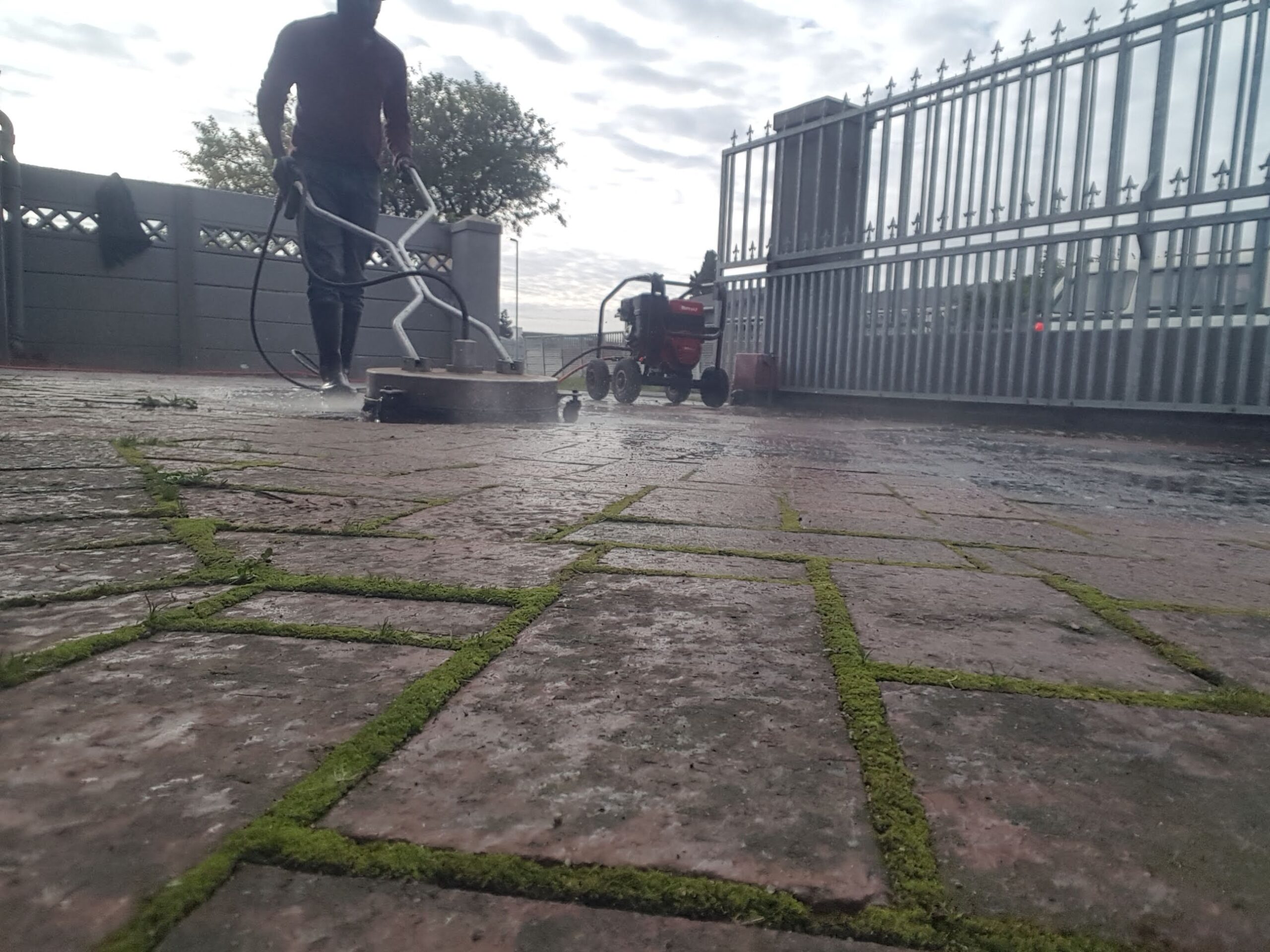A Comprehensive Guide
Introduction
The driveway is one of the most used and often neglected areas of a home. Over time, it accumulates dirt, grime, stains, and even moss or weeds, which can make it unsightly and potentially slippery.
Pressure washing is an effective and efficient method to clean and restore the appearance of your driveway.
However, it can be a daunting task, especially for first-timers.
This article offers five tips and tricks for driveway pressure washing to help you achieve professional-looking results.

- Preparation is Key
Before you start pressure washing your driveway, it’s crucial to prepare the area to ensure safety and efficiency. Begin by removing any loose debris, such as leaves or rocks, from the driveway.
This step will prevent the debris from clogging the pressure washer or being launched as a projectile.
Next, protect nearby plants and objects from the powerful water stream.
Cover them with plastic sheets or tarps and secure the coverings with weights or ropes.
Additionally, ensure that all windows and doors are closed to prevent water from entering your home.
Lastly, inspect your driveway for any cracks or damages. Pressure washing can exacerbate these issues, so it’s best to repair them beforehand.
- Choose the Right Equipment and Detergent
The success of your driveway pressure washing project largely depends on the equipment and detergent you use.
For the equipment, you can either rent a pressure washer from a home improvement store or invest in one if you plan to use it frequently.
A pressure washer with a power rating of 3000 PSI or higher is ideal for driveways.
Additionally, it should come with a variety of nozzles, as different nozzles produce different water stream patterns and pressures.
For the detergent, choose one that’s specifically formulated for driveways.
These detergents typically contain ingredients that can effectively break down and remove oil, grease, and tire marks.
Moreover, they’re usually safe for the environment and won’t harm your plants or pets.
- Master the Technique
Pressure washing might seem like a simple point-and-shoot task, but there’s a technique to it to ensure thorough cleaning and prevent damage.
First, start by applying the detergent evenly on the driveway using a low-pressure nozzle.
Let it sit for a few minutes to allow the detergent to penetrate and loosen the dirt and stains.
Next, switch to a high-pressure nozzle and start rinsing from the top of the driveway, moving downwards in a sweeping motion.
This technique will prevent the creation of streaks and ensure that the dirty water is being rinsed away, not reapplied.
Additionally, maintain a consistent distance between the nozzle and the driveway, and avoid lingering in one spot for too long.
This practice will prevent the creation of lines or damage to the surface.

- Safety First
Pressure washing can be dangerous if not handled correctly.
The high-pressure water stream can cause injuries or damage to property, so it’s essential to prioritize safety.
Always wear protective gear, including goggles, gloves, and sturdy, non-slip shoes. These items will protect you from debris, chemicals, and potential slips or falls.
Additionally, never aim the pressure washer at people, animals, or fragile objects.
The water stream can cause serious injuries or damage.
Lastly, ensure that the pressure washer is properly grounded to prevent the risk of electrocution.
- Post-Cleaning Care
After you’ve finished pressure washing, it’s essential to take some post-cleaning care steps to maintain the appearance of your driveway and ensure safety.
Begin by inspecting the driveway for any new or worsened cracks or damages.
If you find any, consider repairing them to prevent further deterioration.
Next, allow the driveway to dry completely before using it. A wet driveway can be slippery and potentially dangerous.
Additionally, consider reapplying the detergent and repeating the cleaning process if you’re not satisfied with the results.
Some stains or areas might require more attention and time.
Lastly, consider sealing your driveway. A sealant can protect the surface from future stains and damage, making it easier to maintain and clean.
Conclusion
Pressure washing is an effective and efficient method to clean and restore the appearance of your driveway.
However, it can be a daunting task, especially for first-timers. By following these five tips and tricks for driveway pressure washing, you can achieve professional-looking results and ensure safety and efficiency.

